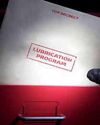
Factor: H5M
Inspection routes are complex, and the reality is that just because they are being performed doesn't mean they are being performed correctly. Let's look at an example:
Larry Smith is a lube tech. He has a few years of experience in this role but no formal training. His inspection route for today includes 64 machines spread throughout four different areas of the plant a task that should take Larry four to six hours to complete. Larry is given simple instructions to "inspect"; it is also assumed that he will take corrective actions when needed.
At each inspection, Larry relies on his intuition. He looks at sight glasses (where available) to determine the oil level, and when necessary, he tops up the oil. He also looks for abnormal conditions, fixing the things he can (like a hatch left open), and noting unusual conditions that he can't address immediately (spent breathers, loose bolts on machine footing, leaky drain ports, gauge issues, etc.). Many of the machines that Larry inspects are not equipped with sight glasses, greatly limiting the scope of Larry's inspection abilities and leaving him only able to make general observations.
How does Larry's inspection route compare to your inspection routes? Are you relying on your intuition and experience alone to know what to look for? Do your machines lack the hardware to allow for good inspections? Here are some mistakes that, when fixed, will greatly improve the effectiveness of Larry's work.
5 Common Mistakes made when Developing an Inspection Route
1 Not Giving Inspections Enough Importance
هذه القصة مأخوذة من طبعة January - February 2023 من MACHINERY LUBRICATION INDIA.
ابدأ النسخة التجريبية المجانية من Magzter GOLD لمدة 7 أيام للوصول إلى آلاف القصص المتميزة المنسقة وأكثر من 9,000 مجلة وصحيفة.
بالفعل مشترك ? تسجيل الدخول
هذه القصة مأخوذة من طبعة January - February 2023 من MACHINERY LUBRICATION INDIA.
ابدأ النسخة التجريبية المجانية من Magzter GOLD لمدة 7 أيام للوصول إلى آلاف القصص المتميزة المنسقة وأكثر من 9,000 مجلة وصحيفة.
بالفعل مشترك? تسجيل الدخول

The Secrets For Implementing A Clean lubricant Program
If you could find an investment that guaranteed a return 40 times greater than your initial investment, you probably wouldn't pass it up.

MAINTAIN? REPAIR? REPLACE?
When considering the life of any asset, the question arises: what types of interventions should be planned to keep it operating or to restore operation in the event of its failure?

Engineering Reports Should Be Like Bad Movies
I'm frequently asked to review engineering reports, and I'm continually baffled by how many engineers want to take their readers on a journey instead of getting to the point.

WHY SCHEDULED OIL CHANGES AREN'T ENOUGH TO MITIGATE LUBRICANT CONTAMINATION
There are few problems more insidious or damaging to large industrial machinery than contaminated lubricant.

LUBRICATION CONTAMINATION PREVENTION
How many articles have you read, or seminars listened to, that tout the value of contamination control? If you are like me, they number in the hundreds—if not thousands. One thing about these articles and seminars that bothers me is the word “control”.

LUBRICANT CONTAMINATION PREVENTION AND MITIGATION: A Guide For Maintenance Professionals
Lubricants are essential for the smooth and efficient operation of many types of machinery, from engines and turbines to gears and bearings.

TASK-BASED TRAINING | INSPECTING A SINGLE-POINT LUBRICATOR
A single-point lubricator is a device engineered to attach to a single unit to regularly and automatically deliver a small amount of clean grease or lubricating oil to a specific area.

TOP LEADERSHIP FOCUSES FOR IMPROVED RELIABILITY AND COST REDUCTION
Here’s a scenario that may sound eerily familiar – you have a new reliability initiative.

4 KEY ELEMENTS FOR INTERPRETING AN OIL ANALYSIS REPORT
Years ago, a customer came into my office, visibly upset. He had just received his second oil analysis report for one of his Caterpillar gas engines.

ASTM ENHANCEMENTS TO MICROSCOPIC PARTICLE IDENTIFICATION AND DOCUMENTATION
In 1982, Daniel Anderson published his influential book, \"Wear Particle Atlas\", which describes, sizes, and classifies particles found in oil.